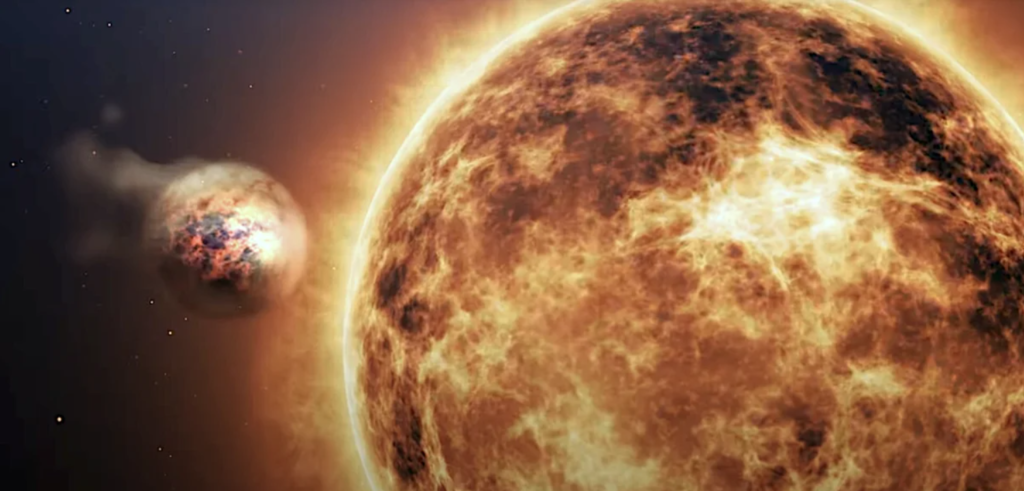JWST Discovers Alien Planet with ‘fluffy’ Composition Experiencing that rains sand
Recent observations from the James Webb Space Telescope disclose the presence of silicate sand clouds at high altitudes in the atmosphere of the exoplanet WASP-107b.

A recent study unveils the presence of peculiar sandy clouds high in the atmosphere of an exoplanet. While the James Webb Space Telescope (JWST) typically focuses on observing the distant origins of the universe during the formation of galaxies, it also dedicates significant attention to objects closer to home, such as the atmospheres of exoplanets within our galactic vicinity.
European astronomers, utilizing JWST observations, have meticulously examined the atmospheric makeup of a nearby “fluffy” exoplanet known as WASP-107b. Within this dynamic atmosphere, researchers identified water vapor, sulfur dioxide, and notably, clouds of silicate sand. The findings not only contribute to our comprehension of the chemistry of distant planets but also pose implications for understanding the atmospheric dynamics of these celestial bodies.
WASP-107b, recognized as one of the least dense planets, shares similarities with a comet. Although it is approximately Jupiter’s size, it possesses only 12% of Jupiter’s mass. Situated around 200 light years away from Earth, WASP-107b completes its orbit around a slightly cooler and less massive star than our sun in just six days.
The planet’s low density, or “fluffiness,” enabled astronomers to delve 50 times deeper into its atmosphere compared to denser planets like Jupiter.
The initial detection of sulfur dioxide, a compound known for the smell when lighting a match, surprised astronomers due to the host star emitting a relatively small fraction of high-energy photons. Nonetheless, the planet’s low density allows these photons to penetrate deeply into its atmosphere, triggering chemical reactions that produce sulfur dioxide.
Apart from sulfur dioxide, astronomers identified high-altitude clouds comprised of fine silicate particles, essentially resembling fine-grained sand. The researchers propose that these sand clouds form similarly to water vapor and clouds on Earth, involving droplets of sand. As these sand droplets condense and fall, they encounter hot layers within the planet, transforming into silicate vapor and rising again to recondense into clouds.
Lead author Leen Decin of Katholieke Universiteit Leuven in Belgium emphasized the groundbreaking impact of JWST on exoplanet characterization, providing unprecedented insights rapidly. The discovery of sand, water, and sulfur dioxide clouds on this “fluffy” exoplanet marks a pivotal milestone, reshaping our understanding of planetary formation and evolution while shedding new light on our own solar system. Observations were conducted using JWST’s Mid-Infrared Instrument (MIRI), a spectrograph that explores planetary atmospheres in mid-infrared wavelengths. The findings were published in the journal Nature on November 15th.
Do not forget to share your opinion with us to provide you with the best posts !




0 Comments